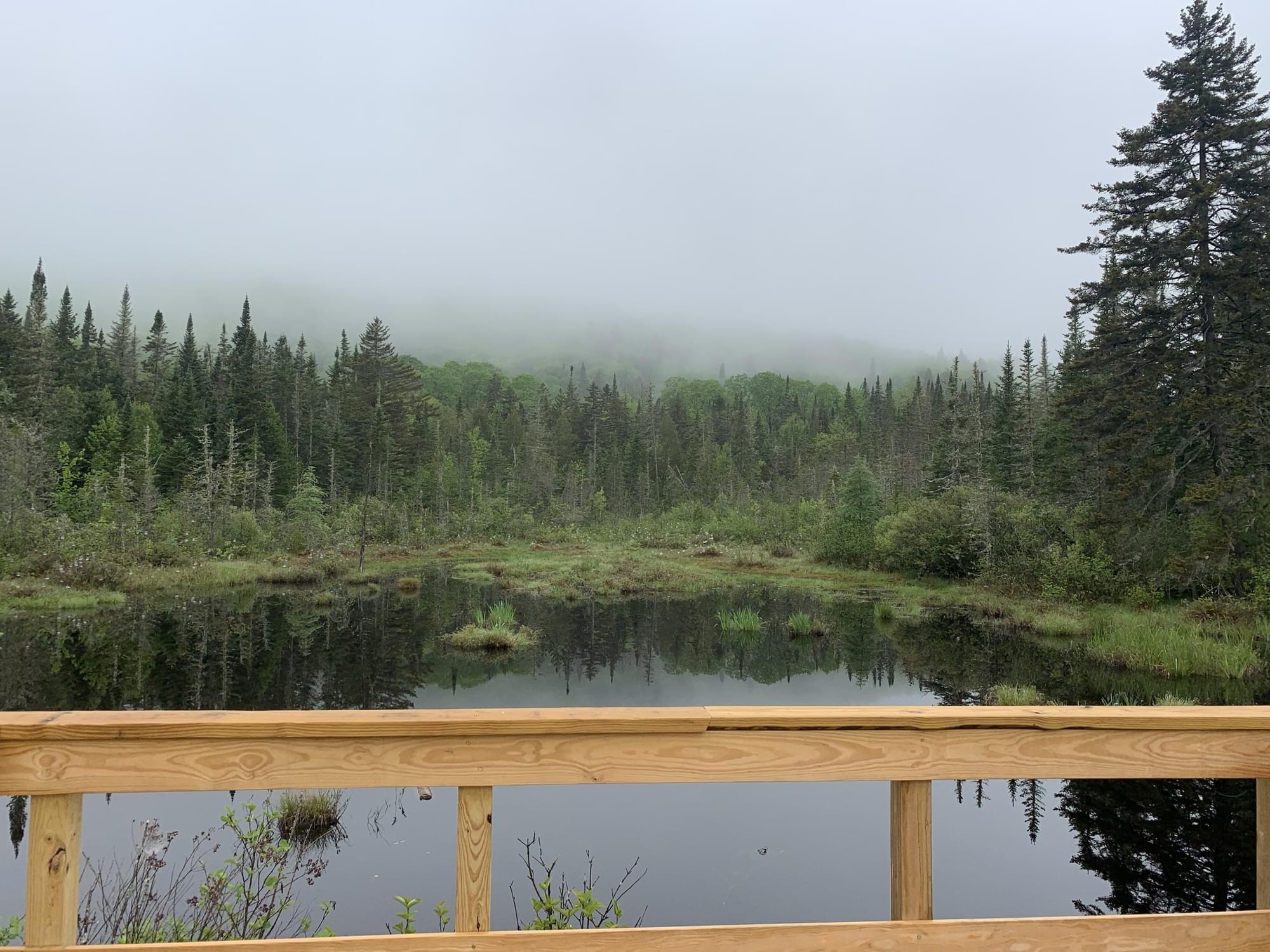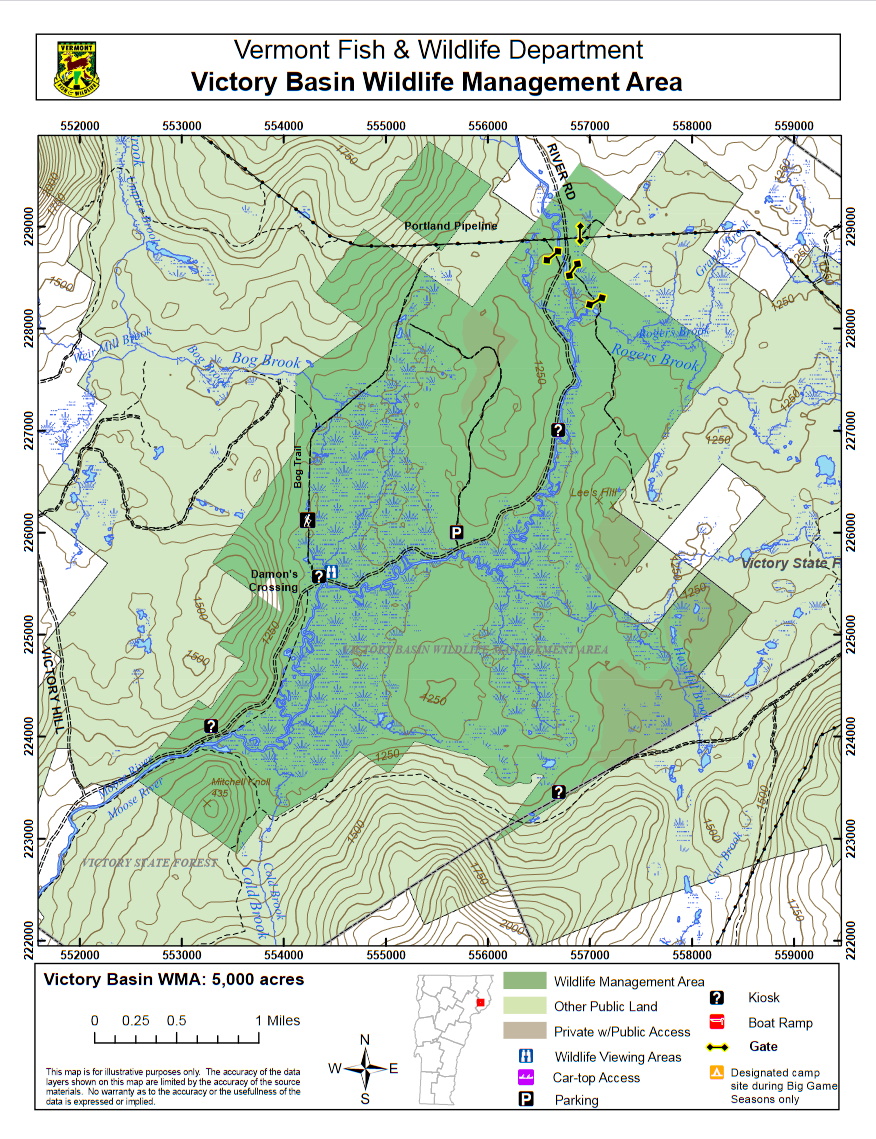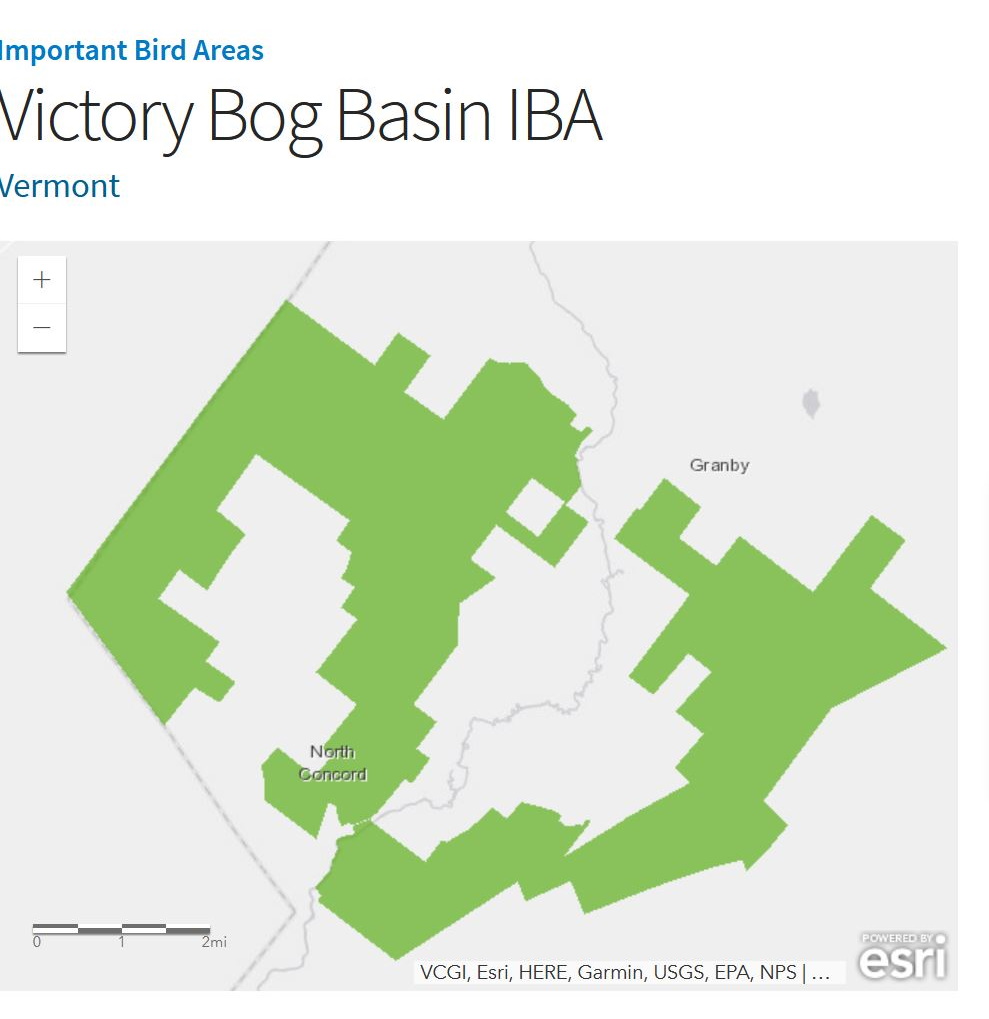Victory Basin IBA

Victory Basin IBA
Victory, Vermont 05858
Victory Basin Wildlife Management Area guide and mapVictory Basin Bog IBA webpage
Tips for Birding
Birdwatching in Vermont, pp. 116-117.
“While the birding can be good anywhere along River Road (particularly during migration), the parking area, adjacent open wetland, and trail are almost always busy with birds.”
Tom Berriman's Birding Essex County, Part 1.
When submitting eBird observations at Victory Basin Wildlife Management Area, it is most helpful to start a new checklist for each hotspot in the wildlife management area. Use the general hotspot when you have a checklist that includes multiple locations or if no other hotspot or personal location is appropriate for your sightings.
Birds of Interest
Woodcock feed in the alder swales and breed in old fields and openings along the Moose River. Forest management activities complement the natural ruffed grouse habitat on the floodplain.
Great habitat diversity provides excellent opportunities for bird watching, with over 130 species sighted in the Basin. The gray jay, olive-sided flycatcher, Cape May warbler, black-backed woodpecker, rusty blackbird, and white-winged crossbill are boreal forest species observed in the WMA that are not commonly found in other parts of Vermont.
About Victory Basin Wildlife Management Area
See all hotspots at Victory Basin Wildlife Management Area
Victory Basin Wildlife Management Area (WMA) is a 4,970-acre wetland and forest complex owned by the State of Vermont and managed by the Vermont Fish and Wildlife Department. The property is located 15 miles northeast of Saint Johnsbury in the town of Victory, in Essex County. Access areas are located along Victory Road, a dirt road that bisects the WMA and follows the Moose River from North Concord to Gallup Mills.
This WMA hosts a variety of habitat types, all within close proximity to each other. Within the heart of Victory Basin lies a 20-acre, broad-leaved, evergreen scrub-shrub community classified as a “boreal bog”. Small stands of black spruce are scattered across the lowest elevations, growing on lush sphagnum moss beds. Extensive stands of red spruce and balsam fir surround these wetland sites on slightly higher elevations, providing critical wintering habitat for white-tailed deer.
The Moose River’s meandering floodplain is dotted by alder swales, black cherry “islands” and sedge meadows. The hills surrounding the basin are dominated by yellow birch-American beech-sugar maple forest typical of the region.
Beaver ponds provide feeding grounds for great blue herons and bitterns, and nesting habitats for wood, black, and mallard ducks, and hooded and common mergansers.
Notable Trails
The TrailFinder website has a description and map of hikes at Victory Basin Wildlife Management Area.
Features
Restrooms on site
Wheelchair accessible trail
Entrance fee
Content from Victory Basin Wildlife Management Area guide and map and TrailFinder website
Last updated January 22, 2024

